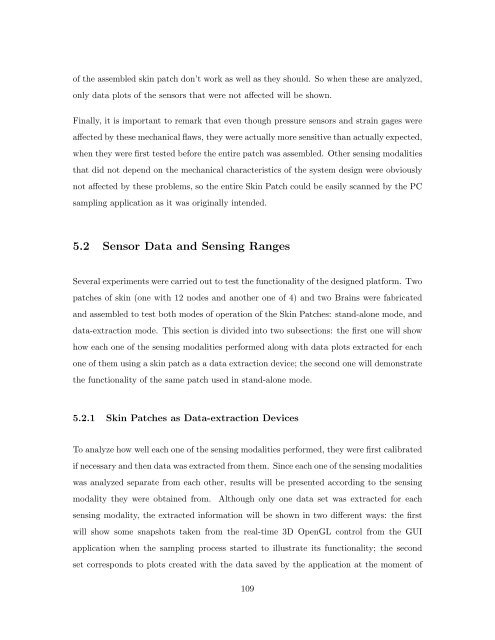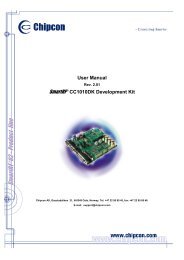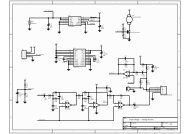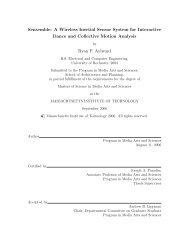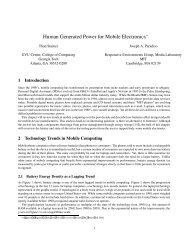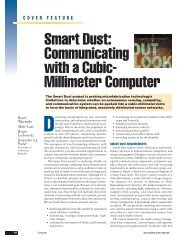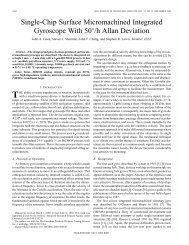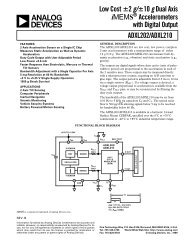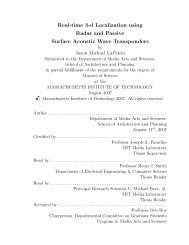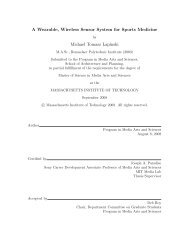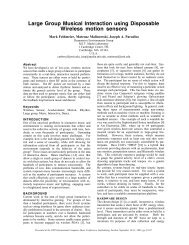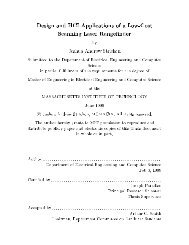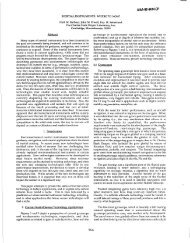S.N.A.K.E.: A Dynamically Reconfigurable Artificial Sensate Skin ...
S.N.A.K.E.: A Dynamically Reconfigurable Artificial Sensate Skin ...
S.N.A.K.E.: A Dynamically Reconfigurable Artificial Sensate Skin ...
Create successful ePaper yourself
Turn your PDF publications into a flip-book with our unique Google optimized e-Paper software.
of the assembled skin patch don’t work as well as they should. So when these are analyzed,<br />
only data plots of the sensors that were not affected will be shown.<br />
Finally, it is important to remark that even though pressure sensors and strain gages were<br />
affected by these mechanical flaws, they were actually more sensitive than actually expected,<br />
when they were first tested before the entire patch was assembled. Other sensing modalities<br />
that did not depend on the mechanical characteristics of the system design were obviously<br />
not affected by these problems, so the entire <strong>Skin</strong> Patch could be easily scanned by the PC<br />
sampling application as it was originally intended.<br />
5.2 Sensor Data and Sensing Ranges<br />
Several experiments were carried out to test the functionality of the designed platform. Two<br />
patches of skin (one with 12 nodes and another one of 4) and two Brains were fabricated<br />
and assembled to test both modes of operation of the <strong>Skin</strong> Patches: stand-alone mode, and<br />
data-extraction mode. This section is divided into two subsections: the first one will show<br />
how each one of the sensing modalities performed along with data plots extracted for each<br />
one of them using a skin patch as a data extraction device; the second one will demonstrate<br />
the functionality of the same patch used in stand-alone mode.<br />
5.2.1 <strong>Skin</strong> Patches as Data-extraction Devices<br />
To analyze how well each one of the sensing modalities performed, they were first calibrated<br />
if necessary and then data was extracted from them. Since each one of the sensing modalities<br />
was analyzed separate from each other, results will be presented according to the sensing<br />
modality they were obtained from. Although only one data set was extracted for each<br />
sensing modality, the extracted information will be shown in two different ways: the first<br />
will show some snapshots taken from the real-time 3D OpenGL control from the GUI<br />
application when the sampling process started to illustrate its functionality; the second<br />
set corresponds to plots created with the data saved by the application at the moment of<br />
109


